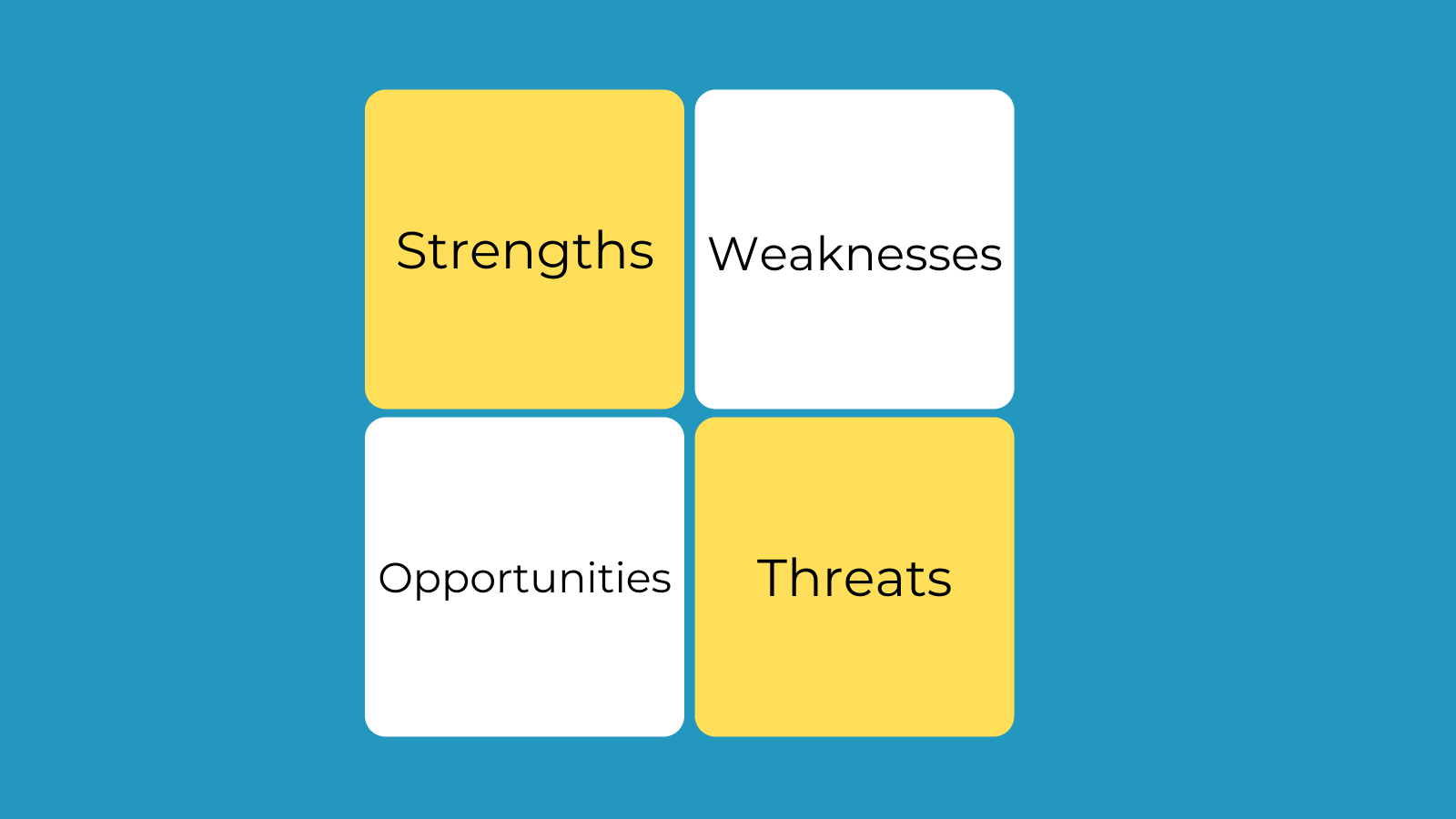What is a Marketing Plan?
A marketing plan is a roadmap of how you’re going to market your business over a period of time. A good marketing plan contains goals, a timeline, specific tactics to meet your goals, and KPIs to track your progress. Putting this all together may seem intimidating at first, but with a little advice and examples to guide you along the way, you’ll be on your way in no time.
Why You Need a Marketing Plan
Marketing has a lot of moving parts. Even for small businesses. Modern digital marketing means effectively using and tracking several online marketing channels from social media to your website to attract potential customers’ attention and keep them coming back. Without a marketing plan, you might just be throwing spaghetti at a wall and seeing what sticks.

Types of Marketing Plans
Not all marketing plans are the same. They can serve a variety of purposes depending on the time of year and business goals they are trying to accomplish.
Quarterly or Annual Marketing Plans
Quarterly and annual plans highlight all of the strategies or campaigns you'll take on in the quarter or the year. They are typically more general overviews than other types of marketing plans.

Paid Marketing Plan
Paid plans are specific to paid marketing strategies, including but not limited to:
- Paid-for native advertising
- PPC campaigns
- Paid social media promotions

Content Marketing Plan
These plans typically cover content promotions like blog posts, email marketing, videos, webinars, and more. Sometimes they also include social media, but the focus is on longform content.

Social Media Marketing Plan
Many marketing departments create marketing plans specific to social media. Others include it in their paid or content marketing plans, but sometimes it’s worth it to have a separate social media marketing plan that covers all the channels, tactics, and campaigns you intend to run.

New Product and Service Launch Marketing Plan
Every time you release new products and services into the market, it’s a good idea to create a plan for it. It should include new market research on this specific offering and the differences and similarities between how you promote your other products and services.

Marketing Plan vs. Marketing Strategy
Marketing plan and marketing strategy sound similar enough, but they’re not the same thing.
|
Marketing Plan |
Marketing Strategy |
|
An overview of marketing over time |
A detailed layout of individual marketing campaigns |
|
Describes multiple strategies |
Describes how a business will accomplish a particular goal |
What Goes in a Marketing Plan?
There isn’t a hard and fast rule about what a marketing plan looks like, but here are the main things to make sure you include to keep your marketing department on the right track.
Marketing Goals and Mission
Your first step in writing a marketing plan is to state your mission. Although this mission is specific to your marketing department, it should serve your business's main mission statement. Be specific, but not too specific. You have plenty of space left in this marketing plan to elaborate on how you'll acquire new customers and accomplish this mission.
For example, if your business's mission is "to make booking travel a delightful experience," your marketing mission might be "to attract an audience of travelers, educate them on the tourism industry, and convert them into users of our bookings platform."
- Make sure they are SMART objectives
- Specific
- Measurable
- Achievable
- Realistic
- Timely
- Reconsider the overall goals of your organization
- Short-term vs. Long-term goals
- Include your company’s mission statement

KPIs
Any good marketing plan includes how you plan to track its progress towards the mission. That’s where key performance indicators (KPIs) come in. KPIs are metrics that measure the success of specific pieces of a marketing campaign. These metrics help you set short-term goals and communicate your progress towards achieving them. Some examples of KPIs include:
- Sales revenue
- Inbound marketing return on investment
- Cost per lead
- Customer value
- New contact rate
- Landing page conversion rate
- Organic and social media traffic

Buyer Personas
A buyer persona is a description of the target audience you want to attract. Most businesses have more than one to represent different market segments. Think about these questions as you create them:
- Who are you marketing to?
- What are their pain points?
- Where do they spend time online?
- What are their demographic traits?
Base your buyer personas on market research and make sure that all of the leaders agree that they reflect the ideal customer you want to reach.

Content Initiatives
This is where you include an overview of your content strategy. Choose your content marketing efforts wisely and explain how you'll use them to meet your goals.
- Which types of content you’ll create
- Website Copy
- Landing Pages
- Blog Posts
- Newsletters
- Emails
- Social Media Posts
- Webinars
- How much content you’ll create
- KPIs for each type of content
- Distribution channels
- Social Media
- Blog
- Paid advertising on each channel

Buyer’s Journey
The standard buyer’s journey includes:
- Awareness
- Consideration
- Decision
- Retention
In this part of your marketing plan, lay out what these stages look like to your company and how you’ll reach people at each stage.

Budget
Even if you use free marketing channels and platforms whenever possible, marketing costs money. From running ads to hiring people, use these costs to outline a budget in this section of your marketing plan. Be sure to spell out how much money you plan to spend on each marketing tactic.

Competition
In order to effectively market your business, you have to know how you stack up to other companies that are competing for your audience’s attention. Research the key players in your industry and outline their marketing styles in this section. Who has the better search ranking? Who has the better social media presence? What can you learn from each of them.

Contributors
The final step of a marketing plan is to decide who does what. In this section of the marketing plan, delegate tasks to the members of your team.

How to Write a Marketing Plan
Now let’s put the ingredients together.
Research
The first step is to find out what other people think about your company. This should include employees, customers, shareholders, community members, and anyone else who is impacted by your company. Ask for their honest opinions about your strengths and weaknesses. You’ll use this information for the SWOT analysis section of your marketing plan.

Conduct a Competitive Analysis
You can’t know what goes on in your competitors’ marketing teams behind closed doors, but you can find out how effective they are. Your research on your competitors could include
- Asking the same people from the last step what they think of your competitors
- Reading their websites, social media, and any press coverage about them
- Using an SEO research tool to see how well their websites perform Throughout this research, look for ways in which your company is similar to and different from competitors. Rank them from most to least competitive.

Conduct a SWOT Analysis
SWOT stands for strengths, weaknesses, opportunities, and threats. This analysis is a simple, effective way to analyze and communicate where your company is now and where you want it to go. Use the information from the research you conducted to put it together and figure out your best path to growth.

Determine Your Goals
The goals section should answer the question “how do you want your business to be different after the plan is carried out. These should be SMART business goals like “Increase annual sales by 10% by the end of the year.”

State Your Objectives
While the goals are related to the business in general, marketing objectives are what the marketing plan has to accomplish to reach them. For example, “Reach 5,000 sales prospects with an email campaign with an open rate of at least 30% and a click-through rate of 5%.”

Describe Your Target Market
This is where the buyer personas come in. The idea is to specify who you want to reach with your campaigns and how you plan to do so.

Craft Your Message
What do you want your target audience to know about your company to drive them to take action? That’s your message. The message is usually related to the company’s unique selling proposition, or USP, which states the unique benefits your company offers and thus the reason for doing business with you instead of your competitors.

Define Your Marketing Strategy
Your marketing strategy is the plan of campaigns that will reach your objectives. Think of these questions while you develop it:
- How will you position your business against your competitors?
- What target markets will achieve your goals?
- What pricing will achieve your goals?

Plan Your Marketing Tactics
Tactics are what you will actually do to achieve your goals and and how you will do it. Some examples of marketing tactics are:
- Blogging
- Case studies and white papers
- Email marketing
- Events
- Infographics
- Your logo and branding
- Promotions and contests
- Search engine optimization
- Trade shows
- Videos
- Webinars
- Word-of-mouth marketing
Be sure to choose tactics that are appropriate for your business goals, target audience, and budget. If you’re a solo entrepreneur or other small business without a marketing department, consider consulting with a seasoned marketing professional.

Schedule Your Timeline
Write out a month by month timeline of when and how long each tactic will happen. This will keep your team on the right track to meet your goals.
.png?width=1600&name=Timeline%20(1).png)
Update Your Marketing Plan Regularly
Even the best laid plans need a little tweaking once they are implemented. Be sure to update your marketing plan regularly to account for real world happenings that affect it.

Marketing Plan Examples
Now that you know what should go into a marketing plan, take inspiration from these examples from the pros.
HubSpot's Comprehensive Guide for Content Marketing Strategy
Plan Type: Content Marketing Plan
Chief Outsiders Go-To-Market Plan for a New Product
Plan Type: New Product Launch Marketing Plan
Contently's Content Plan
Plan Type: Content Marketing Plan
How Sav Can Help
Here at Sav, we empower small business owners to succeed online with a beautiful website. But our support doesn’t stop there. Our SEO and social media features make it easy to promote your business as well. Start your free trial today!
Newsletter
Popular
Top Articles
Recommended articles
How to Make a Media Kit
What is a Media Kit? A media kit, also known as a press kit, is a document that businesses give to journalists and media outlets before an...
Read moreWhat is Brand Voice? [And How to Create One]
What is Brand Voice? A brand voice is the unique personality a brand takes on in all of its communication channels. And it’s not just about...
Read moreA Beginner's Guide to the Product Development Process
What is Product Development? Product development is the process of creating a new product or updating an existing product from idea to...
Read more



